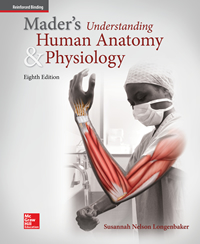1 A) Cytoskeleton, plasma membrane and organelles B) Cytoskeleton, plasma membrane and nucleus C) Cytoplasm, plasma membrane and organelles D) Cytoplasm, plasma membrane and nucleus 2 A) Cytoskeleton B) Flagellum C) Golgi apparatus D) Plasma membrane 3 A) surrounds the cell B) control center of the cell C) keeps the cell intact D) controls what enters and exits the cell 4 A) semipermeable B) permeable C) semisaturated D) superpermeable 5 A) carbohydrates. B) cholesterol. C) proteins. D) phospholipids. 6 A) proteins B) nucleic acids C) carbohydrates D) triglycerides 7 A) hydrophilia B) hydrophobia C) plasma protein fluid D) fluid-mosaic 8 A) phospholipids, proteins, cholesterol and carbohydrates B) phospholipids, triglycerides, cholesterol and carbohydrates C) triglycerides, proteins, carbohydrates and nucleic acids D) cholesterol, carbohydrates, phospholipids and triglycerides 9 A) proteins B) glycoproteins C) cholesterol D) phospholipids 10 A) make cellular energy B) contain cell contents C) make ribosomes D) transport through the membrane 11 A) chromosomes B) nucleolus C) chromatin D) chromaphore 12 A) It is double layered with pores. B) It is single layered and solid. C) It is double layered and solid. D) It is single layered with pores. 13 A) It makes protein. B) It makes ribosomes. C) It makes phospholipids. D) It contains the genetic material. 14 A) Controls the production of protein. B) Produces proteins. C) Produces ribosomes. D) Controls the production of phospholipids. 15 A) vacuole B) mitochondria C) Golgi apparatus D) ribosomes. 16 A) Golgi apparatus – produce ATP or cellular energy B) Lysosomes - cellular digestion with hydrolytic enzymes C) Mitochondria - supports the cell D) Centrioles - produces ribosomes 17 A) Smooth ER - makes proteins B) Peroxisomes – produce ATP C) Golgi apparatus - processing and packaging materials D) Ribosomes - movement by the cell 18 A) mitochondria B) cilia C) Golgi apparatus D) Rough ER 19 A) production of steroids; production of ATP B) modification of proteins: production of ATP C) modification of proteins; production of phospholipids D) production of lysosomes: production of steroids 20 A) spindle fibers B) actin filaments C) globular proteins D) microvilli 21 A) microvilli B) cilia C) flagellum D) centrioles 22 A) chromatin B) endoplasmic reticulum C) peroxisomes D) mitochondria 23 A) endocytosis B) exocytosis C) facilitated diffusion D) 2) phagocytosis 24 A) facilitated diffusion B) osmosis C) pinocytosis D) simple diffusion 25 A) diffusion. B) active transport. C) filtration. D) pinocytosis. 26 A) phagocytosis. B) filtration. C) osmosis. D) active transport. 27 A) shrink. B) swell. C) remain the same. 28 A) into; crenate B) into; lyse C) out of; crenate D) out of; lyst 29 A) active transport B) diffusion C) filtration D) osmosis 30 A) exocytosis B) facilitated diffusion C) osmosis D) simple diffusion 31 A) lower; higher B) higher; lower 32 A) exocytosis B) facilitated diffusion C) filtration D) osmosis 33 A) pores. B) tubules. C) filters. D) pumps. 34 A) phagocytosis. B) exocytosis. C) pinocytosis. D) cell pumping. 35 A) exocytosis. B) endocytosis. C) filtration. D) osmosis. 36 A) apoptosis. B) crenation C) endocytosis D) exocytosis 37 A) interphase and prophase. B) interphase and mitosis. C) interphase and metaphase. D) interphase and apoptosis. 38 A) The cell carries on its normal activities. B) The DNA replicates. C) The chromosomes condense and become visible. D) The cell makes enzymes and proteins needed for division. 39 A) protein synthesis B) transcription C) translation D) replication. 40 A) transcription. B) replication. C) translation. D) apoptosis 41 A) two new strands of DNA B) two old strands of DNA C) one old strand and one new strand of DNA 42 A) amino acid B) carbohydrate C) lipid D) protein 43 A) peptide; triplet. B) triplet; codon. C) codon; triplet. D) codon; anticodon. 44 A) peptide; triplet. B) triplet; codon. C) codon; triplet. D) codon; anticodon. 45 A) 2-3-5-4 B) 4-1-2-3-5 C) 2-3-5-1-4 D) 2-5-3-4-1 46 A) mitosis. B) transcription. C) translation. D) replication. 47 A) growth B) spermatogenesis C) oogenesis D) B and C, but not A 48 A) Anaphase, metaphase, prophase and telophase B) Anaphase, cytokinesis, prophase and telophase. C) Cytokinesis, G1 phase and G2 phase. D) G1 phase, G2 phase and S phase 49 A) metaphase, anaphase, prophase, telophase B) prophase, metaphase, anaphase, telophase C) prophase, anaphase, metaphase, telophase D) anaphase, prophase, telophase, metaphase 50 A) tissue repair B) spindle fibers C) two daughter cells D) chromosome number reduction 51 A) mRNA B) ribosomes C) chromosomes D) polyribosomes 52 A) metaphase. B) interphase. C) prophase. D) telophase. 53 A) anaphase. B) telophase. C) prophase. D) metaphase. 54 A) prophase. B) anaphase. C) telophase. D) metaphase. 55 A) metaphase. B) telophase. C) prophase. D) anaphase. 56 A) metaphase. B) telophase. C) anaphase. D) prophase. 57 A) interphase. B) anaphase. C) cytokinesis. D) mitosis. 58 A) apoptosis B) cytokinesis C) interphase D) mitosis 59 A) 23 B) 92 C) 46 D) 69 60 A) body cells. B) sex cells. C) hair cells. D) skin cells. 61 A) 23 B) 92 C) 46 D) 69





